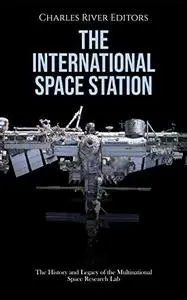The International Space Station: The History and Legacy of the Multinational Space Research Lab by Charles River Editors
English | December 2, 2022 | ISBN: N/A | ASIN: B0BNXXFNVB | 95 pages | EPUB | 3.14 Mb
English | December 2, 2022 | ISBN: N/A | ASIN: B0BNXXFNVB | 95 pages | EPUB | 3.14 Mb
When Apollo 11 landed on the Moon in July 1969, hundreds of millions around the world were watching a live televised broadcast of the first men walking on the Moon. As Neil Armstrong and Buzz Aldrin planted an American flag, an unmanned Soviet spacecraft, Luna 15, was in the Moon’s orbit, preparing to land as well. The Moon missions were a competition between the two nations, part of a “Space Race” spanning two decades. But as images of Apollo 11 beamed across millions of television screens on the night of July 20, it was clear that Apollo 11 also represented a human accomplishment.
Much has been written about the Space Race, which is still taught across America today, but the story of human space exploration is mostly one of cooperation. Even in the summer of 1969, the Soviets had given the United States the flight plan for its Luna 15 mission, allowing Apollo 11 to avoid it.
That was the first of many examples of cooperation in space between the United States and the Soviet Union during the Cold War, and ultimately, their research and cooperation helped lead to the construction of the International Space Station (ISS), a large space station assembled in Earth’s orbit that represents the most ambitious international space project in history.
Thanks to the various components that have been put together, the International Space Station is bigger and brighter than all other artificial satellites. With relatively low power magnification, people can see the solar panels radiating outward from the numerous international modules which make up the ISS. The reality of that platform, at the edge of the ocean of space, is pretty astounding when looked at from the perspective of history. Only 120 years ago, mankind did not know if it was possible to fly in a heavier-than-air vehicle.
Constructed with over 30 different modules and pieces that were carried into orbit by dozens of different launches, the ISS is already over 150 feet long, 300 feet wide and 60 feet tall, and astronauts from 10 nations have spent time on the space station as long-term crew. In excess of 20 nations have been represented on this space station called “Alpha One,” making the ISS even more international in scope.
In addition, the International Space Station can truly be held as a sign that the Space Age is maturing quite nicely, at least on a social and personal level. A total of 34 women have visited the space station, eight tourists have paid for the privilege of taking the trip to the station, and there have been many who have made multiple trips to the ISS, including 83 who have been there twice, 32 who have been three times, five who have been four times, and two who have each made the trip five times.
Feel Free to contact me for book requests, informations or feedbacks.
Without You And Your Support We Can’t Continue
Thanks For Buying Premium From My Links For Support
Without You And Your Support We Can’t Continue
Thanks For Buying Premium From My Links For Support



